- Home
- Prelims
- Mains
- Current Affairs
- Study Materials
- Test Series
 EDITORIALS & ARTICLES
EDITORIALS & ARTICLES
Feb 10, 2022
SCIENTISTS FIND WHITE-CHEEKED MACAQUE IN ARUNACHAL PRADESH
Recently, the scientists from the Zoological Survey of India (ZSI) have found a new mammal species in the country i.e., the White Cheeked Macaque.
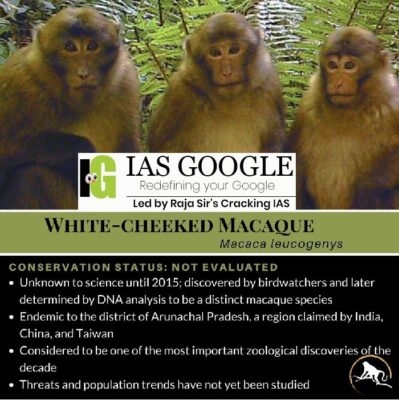

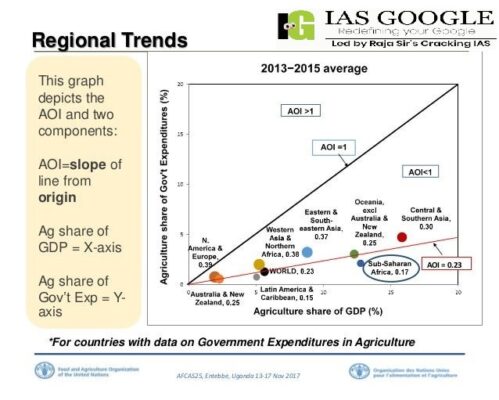
 Accelerate Vigyan Scheme:
Accelerate Vigyan Scheme:
 National Single-Window System?
National Single-Window System?
 Plant-based meat:
Plant-based meat:
 Genesis of India-EU relations
Genesis of India-EU relations
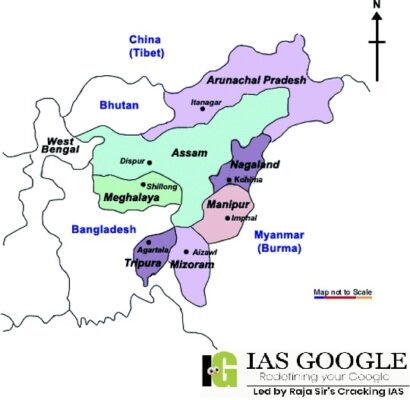 North Eastern Region Community Resource Management Society:
North Eastern Region Community Resource Management Society:
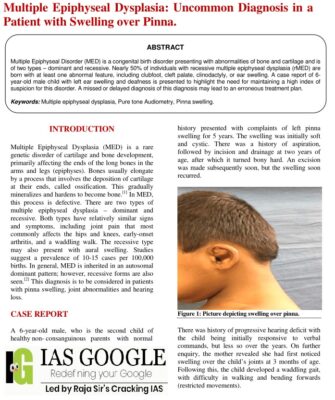 Fairbank’s disease or Multi Epiphyseal Dysplasia
Fairbank’s disease or Multi Epiphyseal Dysplasia
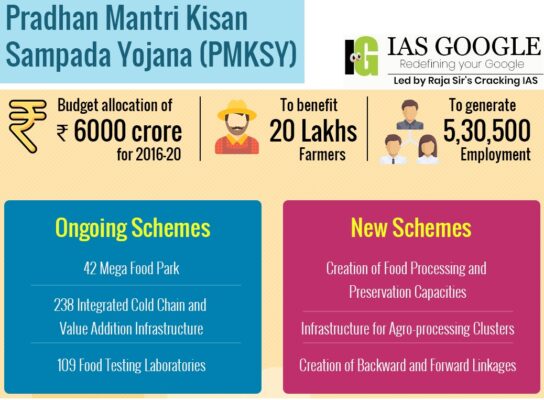 Pradhan Mantri Kisan Sampada Yojana (PMKSY)
Pradhan Mantri Kisan Sampada Yojana (PMKSY)

- While the Macaque was first discovered in China in 2015, its existence was not known in India before this.
- The White-cheeked Macaque (Macaca leucogenys) is a newly discovered species of macaque from the Modog (Mêdog County), in Southeastern Tibet in China.
- The species was distinguished from all potential sympatric macaques (species in the same geographic area) viz. Macaca mulatta, Macaca thibetana, Macaca assamensis and Macaca munzala by several characteristics including pelage (coat of a mammal).
- They have relatively uniform dorsal hair pattern, hairy ventral pelage, hairless short tail, prominent pale to white side- and chin-whiskers creating a white cheek and round facial appearance, dark facial skin on the muzzle, long and thick hair on its neck, and round rather than arrow-shaped male genitalia.
- The White Cheeked Macaque has distinct white cheeks, long and thick hair on the neck and a longer tail than other Macaque species.
- It is the last mammal to have been discovered in Southeast Asia.
- Both the Arunachal macaque as well as the White Cheeked Macaque exist in the same biodiversity hotspot in the eastern Himalayas.

- It was aimed at preventing cruelty committed upon a woman by her husband and her in-laws by facilitating rapid state intervention, as instruments to settle personal scores against the husband and his relatives”.
- It becomes pertinent to mention that incorporation of Section 498A of IPC was aimed at preventing cruelty committed upon a woman by her husband and her in-laws by facilitating rapid state intervention.
- It is equally true that in recent times, matrimonial litigation in the country has also increased significantly and there is a greater disaffection and friction surrounding the institution of marriage.
- Husband or relative of husband of a woman subjecting her to cruelty.
- Whoever, being the husband or the relative of the husband of a woman, subjects such woman to cruelty shall be punished with imprisonment for a term which may extend to three years and shall also be liable to fine.
- Section 498-A is distinguishable from section 4 of the Dowry Prohibition Act because in the latter mere demand of dowry is punishable and existence of element of cruelty is not necessary, whereas section 498-A deals with aggravated form of the offence.
- It punishes such demands of property or valuable security from the wife or her relatives as are coupled with cruelty to her.

- The Food and Agriculture Organization (FAO) of the United Nations (UN) report for 2001 to 2019 shows that, globally, India is among the top 10 countries in terms of government spending in agriculture, constituting a share of around 7.3% of its total government expenditure.
- However, India lags behind several low-income countries such as Malawi (18%), Mali (12.4%), Bhutan (12%), Nepal (8%), as well as upper middle-income countries such as Guyana (10.3%) and China (9.6%).
- The picture changes and rather looks disappointing when we look at the Agriculture Orientation Index (AOI) — an index which was developed as part of the Goal 2 (Zero Hunger) of the 2030 Agenda for Sustainable Development in 2015.
- The Sustainable Development Goal (SDG) 2 emphasizes an increase in investment in rural infrastructure, agricultural research and extension services, development of technology to enhance agricultural productivity and eradication of poverty in middle- and lower-income countries.
- The AOI is calculated by dividing the agriculture share of government expenditure by the agriculture value added share of GDP.
- In other words, it measures the ratio between government spending towards the agricultural sector and the sector’s contribution to GDP.
- India’s index is one of the lowest, reflecting that the spending towards the agricultural sector is not commensurate with the sector’s contribution towards GDP.
- The intensification in government spending towards the agricultural sector is the key to attaining the sustainable development goals of higher agricultural growth and farm income.
- The focus on development of irrigation facilities, urban infrastructure and development of national highways must be complemented.
- There should be an emphasis on the development of rural infrastructure and rural transportation facilities, along with an increase in the number of markets, as suggested by the National Commission on Farmers.
- These measures will play a crucial role in enhancing farmers’ access to markets and integrating small and marginal farmers into the agricultural supply chain to a greater extent.
 Accelerate Vigyan Scheme:
Accelerate Vigyan Scheme:
- "Accelerate Vigyan" (AV) strives to provide a big push to high-end scientific research and prepare scientific workforce, which can venture into research careers and a knowledge-based economy.
- It will initiate and strengthen mechanisms of identifying research potential, mentoring, training and hands-on workshops, on a broad-based national scale.
- Its aim is to expand the research base in the country, with three broad goals - consolidation / aggregation of all scientific training programs, initiating High end Orientation Workshops and creating opportunities for Research Internships.
- It aims to focus on young potential researchers with an aim to give an opportunity to them to spend quality time in the pre-identified premier institution, labs/organizations and empower them through best practices and environment.
- Mission ‘ABHYAAS’ is an attempt to boost Research and Development in the country by enabling and grooming potential PG / PhD level students by developing dedicated research skills in selected areas / disciplines / fields through high-end workshops and research internships.
- This is especially important for those researchers who have limited opportunities to access such learning capacities / facilities / infrastructure.
- This Mission will be achieved through two of its subcomponents / programs, namely ‘KARYASHALA’ (High End Workshops) and ‘VRITIKA’ (Research Internships).
- ‘KARYASHALA’ is an effort to improve research productivity of promising PG and PhD students from universities and colleges through high-end workshops on specific themes.
- ‘KARYASHALA’ is aimed to provide hands-on experience to the students primarily from universities, colleges, private academic institutions and newly established institutes in handling / troubleshooting of high-end scientific instruments and such skill development on themes required for research work.
 National Single-Window System?
National Single-Window System?
- It is a national portal launched in 2021 by the Ministry of Commerce & Industry.
- It aims to reduce the bureaucracy involved in establishing businesses, through a centralised portal that enables investors to identify and obtain relevant permits, licenses and clearances.
- It is an important step in addressing asymmetry and duplication concerning information submitted to different platforms and authorities by investors.
- It also seeks to integrate central and state-level clearances to improve the ease of starting and doing business in the country.
- The integration of J&K's single-window system with the NSWS is aligned with the central government's broader strategy to open up J&K to investors outside the union territory.
- It will effectively allow non-Kashmiris to own land and immovable property in the state.
- In April 2021, the UT government implemented a new industrial policy that included new subsidies, exemptions and loan subvention schemes to attract fresh investment.
 Plant-based meat:
Plant-based meat:
- Plant-based meat is a term that people use to describe foods that mimic meat products but are made from plants. These products include vegetarian-friendly alternatives.
- Ingredients that brands use in plant-based meat products can include Trusted Source:
- vital wheat gluten or seitan
- soy and tofu
- pea protein
- potato starch
- coconut oil
- beans and lentils
- nuts and seeds
- Vegetables
- By 2050, the world population is projected to reach nearly 10 billion. According to the Food and Agriculture Organization, food production must increase by 70% to feed this larger population.
- Also, it takes nearly20 times more land to feed people a meat-based diet compared to what a plant-based diet does, as crops are consumed directly instead of being used to feed animals, which also needs land.
- The meat industry wastes a tremendous amount of water too with about one-third of the world’s water consumption going for producing animal products.
- Heavy antibiotics use in livestock and poultry feed is leading to an increase in antibiotic resistance, which is one of the biggest threats to global health, food security, and development today.
- It plays a major role in greenhouse gas emission which further leads to climate change.
- Plant-based foods require fewer resources—namely land and water and are generally associated with lower greenhouse gas emissions and less impact on global warming.
- Close to 20% of the planet’s fresh water is used in the production of meat and dairy, and animal agriculture is a major driver of climate change, contributing around 14.5 percent of global greenhouse gas emissions.
- Reducing the risk of cardiovascular disease
- Reducing the risk of cancer
- Reducing saturated fat intake will lower cholesterol
- Improving blood sugar control
- Some of the meat substitutes can be heavy in food colorings, textural additives and are high in sodium.
- There are issues associated with some meat substitutes, such as soybeans. Hexane, a chemical solvent used to remove oil from soybeans, is a neurotoxin and an air pollutant.
- India is uniquely poised to be a leader in this sector as crops such as millets, ragi, pulses, and chickpeas which grow here are ideal raw ingredients for plant-based meats. Also, the world’s first center of excellence for clean meat is going to be established in the state-funded Institute of Chemical Technology (ICT).
- This sector can alleviate the climate impact of the meat industry, augment farmers’ incomes, combat malnutrition and save the lives of billions of animals. It is a time we as people support it and encourage it to flourish.
 Genesis of India-EU relations
Genesis of India-EU relations
- India was one of the first countries and the first Asian country to extend diplomatic relations with the European Economic Community in 1962,
- Since then, India–EU relations have progressively developed, where it evolved into a strategic partnership in the 21st century.
- The EEC extended its cooperation in India’s Operation Flood, which was launched on 13 January 1970, and changed India’s dairy architecture also commonly known as the ‘White Revolution’.
- In the 1960s, India’s largest trade partners in the European community were the United Kingdom and West Germany as India–EU trade incrementally increased from US$ 1.638 billion in the 1960s and 1970s to US$ 5.701 billion in 1980.
- The trade relations between India and the EU began blossoming in the 1990s as the Indian economy underwent liberalisation after seeking support from the International Monetary Fund (IMF).
- In 2020, at the 15th EU–India Summit, the two sides also adopted “India–EU Partnership: A Roadmap to 2025” to further strengthen the India–EU Strategic partnership.
- The roadmap highlights cooperation in five critical domains—
- Foreign Policy and Security Cooperation;
- Trade and Economy;
- Sustainable Modernisation Partnership;
- Global governance;
- people-to-people relations.
- In 2021, the EU announced its Indo–Pacific Strategy which aims to promote rules-based regional security architecture in the region by aligning with like-minded allies.
- The region is the new epicenter for geopolitics as it homes for more than 60 percent of the world’s population and accounts for more than two-thirds of the global economic output.
- In order to resolve pressing security issues such as counter-terrorism, maritime security, and nuclear non-proliferation, the EU and India have introduced many frameworks for greater cooperation.
- EU is supporting the Mobilize Your City (MYC) programme in India currently in three pilot cities to reduce their urban transport-related Green House Gas (GHG) emissions.
- India and the EU organize Festivals of culture (e.g., Europalia-India festival), exchanges on heritage such as yoga & Ayurveda etc.
- There are over 50,000 Indian students currently studying in various European Universities, many of whom are under EU’s Erasmus Mundus scholarship programme for higher education.
- As EU seeks to move away from a global supply chain that is overly dependent on China, India can emerge as its most natural ally. EU and India could find a common path in ensuring supply chain resilience to reform the global system in response to health emergencies.
- For both India and the EU, China forefronts a major challenge that requires specific attention.
- European companies are skeptical about the Indian market, not only because of access problems due to protectionist measures, but also due to bureaucracy, corruption, lack of infrastructure and weak consumption.
- Abrogation of Article 35A and 370 and passage of Citizenship Amendment Act, 2019 received considerable attention from EU speaking out on the violation of human rights.
- Exemption of Indian vaccines like Covishield and Covaxin are for the EU Digital Covid certificate or “green pass”.
- Stalling of BTIA (Bilateral Broad-based Trade Investment Agreement) since 2007.
- India and the EU are two of the largest democracies in the world sharing common values and principles and with the rise of multipolarity, both sides can elevate their strategic partnership to realise the true potential between New Delhi and Brussels to find solutions for impending geopolitical challenges.
- Connectivity is one of the major pillars of engagement between the two as physical connectivity, human connectivity and digital connectivity can be the newer areas of cooperation. The India–EU Roadmap also specifically highlights the need to build cooperation on data protection and regulation.
- Additionally, green investment and green infrastructure building are the need of the hour, and the EU can be an important partner to India as Brussels can further its energy relations with India by providing resources, technical know-how, and capabilities in the renewable energy sector.
- The European Union is a group of 28 countries that operate as a cohesive economic and political block.
- 19 of these countries use EURO as their official currency. 9 EU members (Bulgaria, Croatia, Czech Republic, Denmark, Hungary, Poland, Romania, Sweden, and the United Kingdom) do not use the euro.
- The EU grew out of a desire to form a single European political entity to end centuries of warfare among European countries that culminated with World War II and decimated much of the continent.
- The EU has developed an internal single market through a standardised system of laws that apply in all member states in matters where members have agreed to act as one.
- France- Ex SHAKTI, Ex VARUNA, GARUDA
- UK- Ex AJEY WARRIOR, KONKAN, INDRADHANUSH
- Blue Flag- Greece, Poland, France, Germany and Italy
 North Eastern Region Community Resource Management Society:
North Eastern Region Community Resource Management Society:
- It is a registered society under the aegis of the North Eastern Council, Ministry of Development of the North Eastern Region.
- The society is dedicated towards the transformation of far-flung rural areas of North Eastern Region (NER) of India through different livelihood initiatives.
- The society, so far has covered four states of NER viz. Arunachal Pradesh (Changlang, Tirap and Longding districts), Assam (Karbi Anglong and Dima Hasao districts), Manipur (Ukhrul, Senapati, Churachandpur and Chandel districts) and Meghalaya (West Garo Hills and West Khasi Hills districts).
- Society adopted a holistic approach of development with two broad focus areas i.e.
- Social mobilization, organization and capacity building to tap and realize the great latent potential of the communities by employing time tested their traditional value systems and culture, and
- Intervene with the economic and social activities and infrastructure with predominant thrust on income generating activities to achieve economic transformation.
- The strategy adopted to achieve the goals is:
- Capacity building of communities and participating agencies: Institutional strengthening of community-based organisations (CBOs) and strengthening the capacity of participating agencies viz. NGOs, line depts etc. on participatory planning, organisational and financial management, technical training on farm and non-farm activities, monitoring etc.
- Economic and livelihood activities: Promote viable income generation activities (IGAs) for poor households through production of field crops, horticulture, forestry, livestock, fisheries, and non-farm activities using sustainable and environmentally friendly practices. Also, to support communities with the introduction of new technologies, credit/revolving funds to CBOs for internal lending etc.
- Social sector development: The specific objective of this component was to provide communities access to safe drinking water and improved sanitation.
- Rural Roads and Rural Electrification: With the objective to enhance communities’ access to markets, health services, education facilities and energy, the component sought to construct common facility centers (CFCs), inter village roads, culverts and suspension bridges and provide home solar lighting systems.
- Community-based Bio-diversity Conservation & Communication: The specific objective is to protect and preserve the unique natural resources and rich bio-diversity of the region.
 Fairbank’s disease or Multi Epiphyseal Dysplasia
Fairbank’s disease or Multi Epiphyseal Dysplasia
- It is a group of disorders of cartilage and bone development, primarily affecting the ends of the long bones in the arms and legs (epiphyses).
- It is a rare genetic disorder (dominant form: 1 in 10,000 births).
- There are two types of MED, which are distinguished by their patterns of inheritance – autosomal dominant and autosomal recessive.
- Signs and symptoms may include joint pain in the hips and knees; early-onset arthritis; a waddling walk; and mild short stature as adults.
- Recessive MED may also cause malformations of the hands, feet, and knees; scoliosis; or other abnormalities.
- Most people are diagnosed during childhood, but mild cases may not be diagnosed until adulthood.
- It is a hormonal disorder that develops when your pituitary gland produces too much growth hormone during adulthood which leads to an increase in bone size.
- In childhood, this leads to increased height and is called gigantism, but in adulthood, a change in height doesn’t occur.
- It is caused by excessive secretion of growth hormone, most often from a tumour (non-cancerous) in the pituitary gland.
- Middle-aged adults are most commonly affected.
- In more than 95% of cases the excess production is due to a benign tumour, known as a pituitary adenoma.
- However, this condition is not inherited from a person’s parents.
- Symptoms include enlargement of the face, hands and feet, joint pain, thicker skin, deepening of the voice, headaches, and problems with vision.
- Complications of the disease may include type 2 diabetes, sleep apnoea, and high blood pressure.
- World Health Organisation (WHO) defines rare disease as often debilitating lifelong disease or disorder with a prevalence of 1 or less, per 1000 population. However, different countries have their own definitions to suit their specific requirements and in context of their own population, health care system and resources.
- There is a lack of awareness about rare diseases in the general public as well as in the medical fraternity. Many doctors lack appropriate training and awareness to be able to correctly and timely diagnose and treat these conditions.
- About 95% rare diseases have no approved treatment and less than 1 in 10 patients receive disease specific treatment.
- A fundamental challenge in research and development for the majority of rare diseases is that there is relatively little known about the pathophysiology or the natural history of these diseases.
- As the number of persons suffering from individual rare diseases is small, they do not constitute a significant market for drug manufacturers to develop and bring to market. Hence, they are also called ‘orphan diseases and drugs to treat them are called “orphan drugs”.
- Due to the high cost of most therapies, the government has not been able to provide these for free.
- Rare diseases place a major economic burden on any country and especially in resource-constrained settings. In resource-constrained settings, it is pertinent to balance competing interests of public health for achieving optimal outcome for the resources allocated.
- Hence, any policy on rare diseases needs to be considered in the context of the available scarce resources and the need for their utmost judicious utilization for maximizing the overall health outcomes for the whole of society measured in terms of increase of healthy life years.
 Pradhan Mantri Kisan Sampada Yojana (PMKSY)
Pradhan Mantri Kisan Sampada Yojana (PMKSY)
- The Cabinet Committee on Economic Affairs (CCEA) had approved the Central Sector Scheme - SAMPADA (Scheme for Agro-Marine Processing and Development of Agro-Processing Clusters) in its meeting held in May 2017.
- The scheme was renamed as "Pradhan Mantri Kisan SAMPADA Yojana (PMKSY)" on 23 August 2017 for the period 2016-20 coterminous with the 14th Finance Commission cycle.
- The Scheme is being implemented by the Ministry of Food Processing Industries (MOFPI).
- It is a comprehensive package which will result in the creation of modern infrastructure with efficient supply chain management from farm gate to retail outlet.
- It will not only provide a big boost to the growth of the food processing sector in the country but also help in providing better returns to farmers.
- It is a big step towards doubling farmers income, creating huge employment opportunities especially in the rural areas, reducing wastage of agricultural produce, increasing the processing level and enhancing the export of processed foods.
- Creation of modern infrastructure for food processing mega food parks/ clusters and individual units.
- To create effective backward and forward linkages - linking farmers, processors and markets.
- To create robust supply chain infrastructure for perishables.
- Mega food park typically consists of supply chain infrastructure including collection centers, primary processing centers, central processing centers, cold chains and around 25-30 fully developed plots for entrepreneurs to set up food processing units.
- The Mega Food Park project is implemented by a Special Purpose Vehicle (SPV) which is a Body Corporate registered under the Companies Act.
- The aim of the Scheme is to provide integrated cold chain and preservation infrastructure facilities, without any break, from the farm gate to the consumer.
- It aims at creation of processing and preservation capacities and modernization/ expansion of existing food processing units with a view to increasing the level of processing, value addition leading to reduction of wastage.
- It aims at development of modern infrastructure and common facilities to encourage group of entrepreneurs to set up food processing units based on cluster approach by linking groups of producers/ farmers to the processors and markets through well-equipped supply chain with modern infrastructure.
- Its aim is to provide effective and seamless backward and forward integration for processed food industry by plugging the gaps in supply chain in terms of availability of raw material and linkages with the market.
- For the around development of the food processing sector in the country, various aspect of Total Quality Management (TQM) such as quality control, quality system and quality assurance should operate in a horizontal fashion.
- It was launched by the Ministry of Food Processing Industries (MoFPI) in November 2018 in order to stabilize the supply of Tomato, Onion and Potato (TOP) crops and control its price volatility.









 Latest News
Latest News General Studies
General Studies